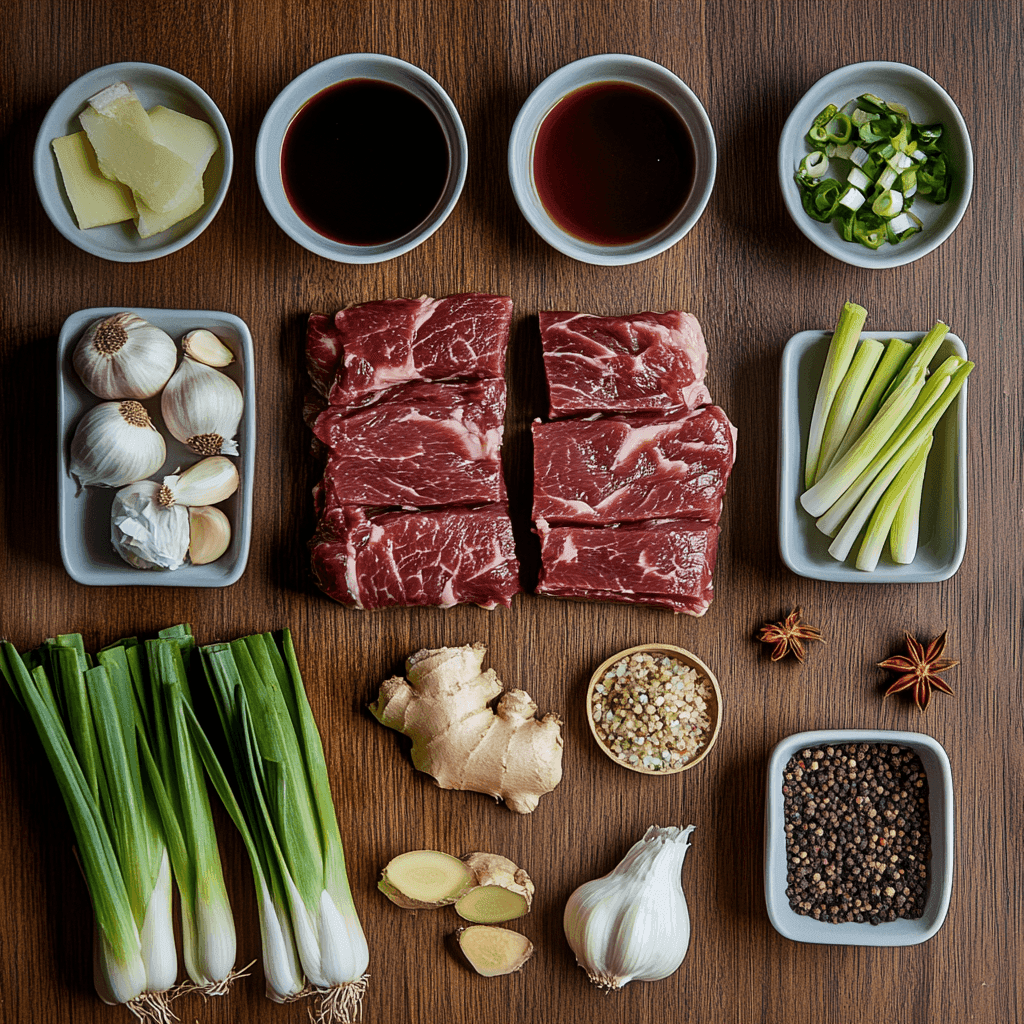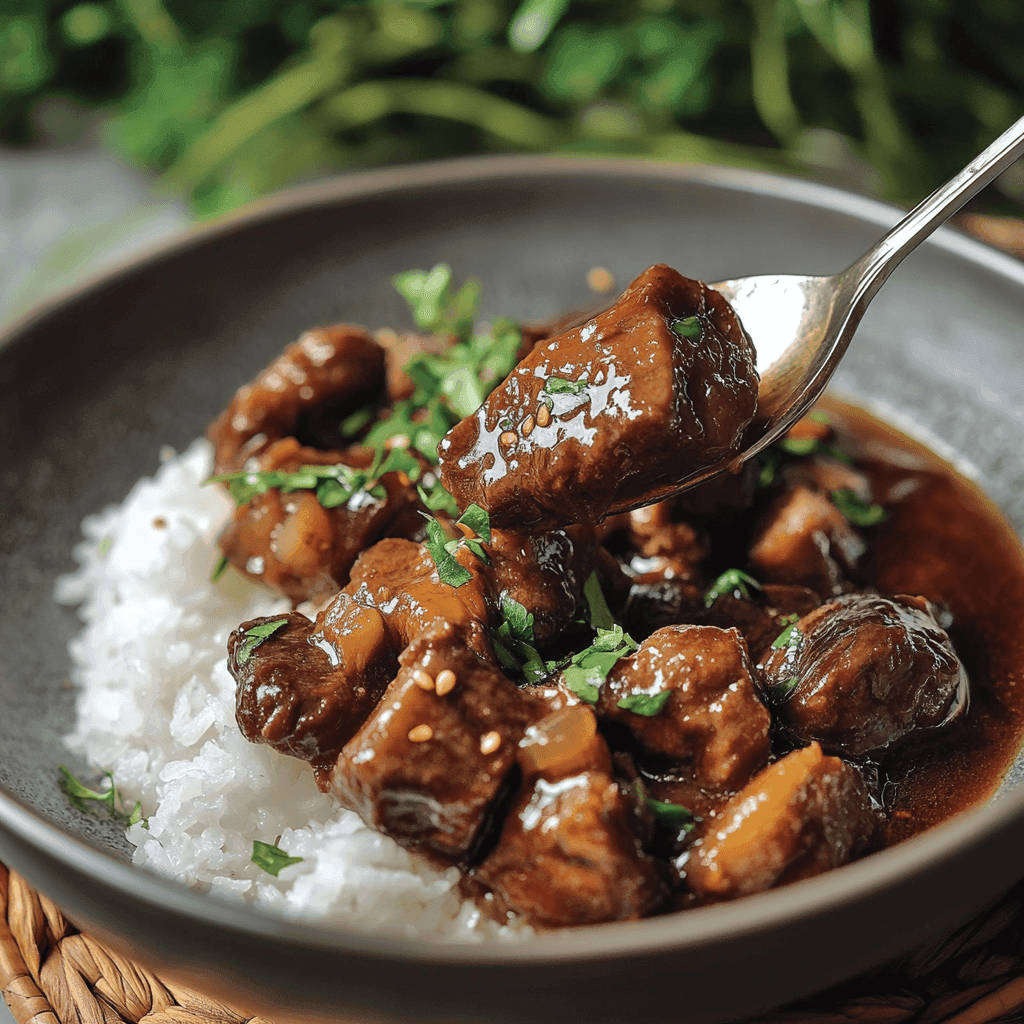Have you heard of “beef tendon” before? It’s a nutritious and tasty ingredient packed with protein and collagen. It’s great for adding flavor and health benefits to your meals.
Beef tendon can spice up your stir-fries or stews. It’s easy to make tender and flavorful. This ingredient is loved for its collagen and joint health benefits.
Table of contents
- Key Takeaways
- What is Beef Tendon and Its Culinary Heritage
- The Nutritional Powerhouse of Beef Tendon
- Adding Beef Tendon to Your Meals
- Understanding the Different Types of Beef Tendon
- Essential Tools and Equipment for Preparing Beef Tendon
- How to Clean and Prepare Raw Beef Tendon
- Traditional Cooking Methods for Beef Tendon
- Modern Cooking Techniques and Time-Saving Tips
- Popular Beef Tendon Recipes and Dishes
- Storage and Preservation Guidelines
- Conclusion: Mastering the Art of Cooking Beef Tendon
- FAQ
- What is beef tendon and what are its health benefits?
- What are the different types of beef tendon and how do they differ?
- What tools and equipment are needed for preparing beef tendon?
- How do you clean and prepare raw beef tendon?
- What are the traditional and modern cooking methods for beef tendon?
- How can beef tendon be incorporated into different dishes?
- How should cooked beef tendon be stored and reheated?
Key Takeaways
- Beef tendon is a nutritious and flavorful ingredient with high protein and collagen content.
- It is a versatile ingredient that can be used in a variety of dishes, from stir-fries to stews.
- Beef tendon is rich in collagen, contributing to skin health and joint strength.
- It is a protein-packed ingredient, known for promoting joint health.
- Beef tendon can be cooked in a variety of ways, including traditional methods and modern techniques like pressure cooking.
- Properly cooked beef tendon has a slightly gelatinous, chewy texture and can be stored for several months when frozen.
- Beef tendon is naturally gluten-free, making it suitable for those on gluten-free diets.
What is Beef Tendon and Its Culinary Heritage
Beef tendon is a key ingredient in many Asian dishes. It’s rich in collagen, giving it a special texture and taste when cooked slowly. You’ll find it in soups and stews, where it’s cooked for hours to become gelatinous. This tradition is a big part of Asian cooking, where it’s prized for its health benefits.
In Asian cooking, beef tendon is often mixed with other foods for a perfect flavor mix. For instance, it’s slow-cooked with veggies and spices in soups. This makes the soup not just tasty but also full of nutrients, making it a favorite for healthy meals.
Traditional Uses in Asian Cuisine
Beef tendon has been a staple in Asian cooking for centuries. Each culture has its own way of using it. Some make hearty stews, while others create flavorful soups. The common thing is the slow-cooking, which adds a unique flavor and texture.
Cultural Significance and History
Beef tendon is more than just food; it’s valued for its health benefits. In some places, it’s seen as a natural remedy for joint pain and inflammation. This makes it a sought-after ingredient for those seeking natural health solutions.
Growing Popularity in Western Cooking
Lately, beef tendon has become more popular in Western cooking. Chefs and home cooks are finding new ways to use it. It’s now in stews and braised short ribs, showing off its unique taste and texture.
The Nutritional Powerhouse of Beef Tendon
Exploring beef tendon reveals its many health benefits. It’s a flavorful and popular ingredient in various dishes. It’s packed with protein, collagen, and other nutrients, making it a nutritious choice for meals.
Beef tendon’s high collagen content is great for healthy skin, joints, and bones. This makes it a valuable addition to your diet.
Some key benefits of beef tendon include:
- High protein content, essential for muscle development and repair
- Low fat content, making it suitable for weight management
- Rich in collagen, crucial for maintaining healthy joints, skin, and bones
- Good source of essential minerals like calcium and phosphorus, supporting strong bones and teeth
When braised, beef tendon becomes tender and easy to digest. It’s perfect for adding excitement to meals. Its health benefits and flavorful taste make it a popular ingredient for enhancing dishes and adding nutrition to your diet.
Adding Beef Tendon to Your Meals
Beef tendon can greatly improve your health and wellbeing. It’s packed with protein and low in fat, making it perfect for weight management or boosting protein intake. Whether you’re looking to spice up your meals or enjoy its health benefits, beef tendon is a must-have in your kitchen.
Understanding the Different Types of Beef Tendon
When cooking with beef tendon, knowing the different types is key. You can find options like the Achilles tendon and knee tendon. Each has its own traits and uses in the kitchen. For example, the Achilles tendon is tender and great for slow-cooked dishes.
Choosing the right tendon is important because of its collagen content. This affects the dish’s texture and taste. Here are some tips to help you decide:
- Choose fresh and tender beef tendon.
- Go for a uniform color for consistent taste.
- Consider the marbling level for flavor and tenderness.
Knowing about beef tendon types lets you make tasty, slow-cooked meals. Beef tendon adds tender texture to stews and rich flavor to broths. It’s a versatile ingredient that will wow your guests.
Beef tendon is not only delicious but also healthy. By picking the right tendon and cooking it well, you’ll have a memorable meal. So, why not try beef tendon and see what tasty dishes you can make?
Essential Tools and Equipment for Preparing Beef Tendon

To make beef tendon, a popular ingredient in many dishes, you need the right tools. A pressure cooker is key for cooking beef tendon. It breaks down the tough tissue, making it tender and flavorful. You’ll also need sharp knives and a cutting board for trimming and slicing the tendon.
Here are some of the key tools and equipment you’ll need:
- Pressure cooker
- Sharp knives
- Cutting board
- Colander or strainer
Consider getting a few more tools to make the process easier. A meat tenderizer, a marinade injector, and a slow cooker can be helpful. With the right tools, you can make delicious and tender beef tendon dishes that will impress everyone.
Having the right tools ensures your beef tendon is cooked safely and efficiently. This brings out the full flavor and texture, making it a great dining experience.
| Tool | Description |
|---|---|
| Pressure Cooker | Used to cook beef tendon quickly and efficiently |
| Sharp Knives | Used to trim and slice the tendon |
| Cutting Board | Used to prepare and slice the tendon |
How to Clean and Prepare Raw Beef Tendon
Cleaning and preparing raw beef tendon is key to cooking. It removes impurities and makes the tendon tender. First, rinse the tendon under cold water to get rid of dirt or debris. This step is vital for a clean start, which is important for slow-cooked dishes. For more ideas, check out beef cheek recipes.
Then, trim the tendon to remove excess fat and connective tissue. This makes the tendon more uniform and flavorful. Use a sharp knife to trim it, focusing on tough or fibrous areas. This is crucial for a collagen-rich tendon that’s great for slow-cooked dishes.
Here are some steps to follow for pre-cooking preparation:
- Rinse the tendon under cold water to remove any dirt or debris
- Trim the tendon to remove any excess fat and connective tissue
- Soak the tendon in cold water for at least 30 minutes to rehydrate it
Follow these steps to make tender and flavorful beef tendon. It’s perfect for slow-cooked stews or hearty soups. Its collagen-rich texture and flavorful taste make it a great addition to any meal.
Traditional Cooking Methods for Beef Tendon
Traditional cooking methods make beef tendon tender and flavorful. Slow-cooking, like braising or stewing, breaks down connective tissue. This creates a rich, gelatinous texture that’s both nutritious and tasty.
Beef tendon can be cooked tender in about 20 minutes with pressure cooking. For firmer tendons, it takes 45-60 minutes. Cooking time for tender tendons is 60-90 minutes, and for extremely tender ones, it’s over 90 minutes.
Slow-cooked beef tendon is a favorite because it soaks up all the broth flavors. Achilles tendon is great for braising, stewing, and slow cooking.
To cook beef tendon, mix aromatics and spices for a flavorful broth. This broth can be served with the cooked tendon. Beef tendons are rich in protein, iron, zinc, and phosphorus, making meals healthier.
Some tips for cooking beef tendon include:
- Using a pressure cooker to cut down cooking time
- Trimming the tendon cleanly for better results
- Avoiding wrong temperature control to prevent toughness or drying
Before simmering with seasonings, boil beef tendon twice to remove impurities and tenderize it. Following these traditional methods, you can make a tasty and healthy dish that highlights beef tendon’s unique texture and flavor.
Modern Cooking Techniques and Time-Saving Tips
Cooking beef tendon right can make it tender and full of flavor. Using a pressure cooker or slow cooker is a great way to do this. These methods cut down cooking time and make the tendon tender.
For example, a pressure cooker breaks down the tendon’s connective tissue. This creates a tasty broth. Braising it in liquid over low heat for a long time also works well. It makes a rich sauce, adding excitement to meals.
Cooking Methods Comparison
- Pressure Cooker: 45 minutes to 1 hour
- Slow Cooker: 8-10 hours
- Braising: 2-3 hours
These modern techniques make a delicious beef tendon dish. They save time and make the tendon tender. With the right method and beef tendon, you get a dish that’s both healthy and tasty.
Signs of Perfect Doneness
A perfectly cooked beef tendon is tender and has a rich broth. Check if it’s done by inserting a fork or knife. If it slides in easily, it’s ready.
You can also bite into it. If it’s tender and falls apart, it’s done. This means it’s ready to eat.
| Cooking Method | Cooking Time | Texture |
|---|---|---|
| Pressure Cooker | 45 minutes to 1 hour | Tender |
| Slow Cooker | 8-10 hours | Fall-apart |
| Braising | 2-3 hours | Rich and flavorful |
Popular Beef Tendon Recipes and Dishes
Beef tendon is great for many dishes, like soups, stews, stir-fries, and braises. You can explore different cuisines to find the perfect recipe. It’s key to slow-cook beef tendon to make it tender and flavorful.
Beef tendon is often used in Asian dishes, such as pho and hot pot. These dishes make a rich, flavorful broth. You can also try fusion recipes, like beef tendon tacos and stir-fries, for a unique taste. Contemporary dishes, like salads and sandwiches, are also great ways to enjoy it.
Exploring Global Cuisine
Beef tendon is a key ingredient in dishes like Vietnamese pho and Indonesian Gulai Kikil. Its high collagen content changes how it cooks and tastes. You can slow cook it for a soft texture or deep fry for a crispy one.
Getting Creative with Beef Tendon
After cooking, beef tendon can be marinated and sliced for salads. It’s also great in soups, stews, or braises. Its versatility and flavor make it a fantastic addition to your cooking.
Storage and Preservation Guidelines

Keeping cooked beef tendon safe and tasty is crucial. You can store it in the fridge for up to 3 days or freeze it for 3 months. Always use a covered container and label it with the date and contents.
Here are some important tips for storing and preserving beef tendon:
- Keep cooked beef tendon in the fridge at 40°F (4°C) or lower.
- Freeze it at 0°F (-18°C) or lower.
- When reheating, make sure it reaches 165°F (74°C) to stay safe.
By following these steps, you can enjoy your flavorful and healthy beef tendon. Always handle and store food safely to avoid getting sick.
Conclusion: Mastering the Art of Cooking Beef Tendon
With the right techniques and ingredients, you can master the art of cooking beef tendon. Whether you’re a seasoned chef or a beginner cook, this versatile collagen-rich ingredient can be used in a variety of delicious and nutritious dishes. By following the tips and methods outlined in this article, you’ll be able to create slow-cooked meals that showcase the unique flavor and texture of beef tendon.
With a little practice and patience, you’ll become a true master of cooking beef tendon. From traditional Asian preparations to modern fusion recipes, the possibilities are endless. Embrace the tendon‘s natural benefits, such as its high protein content and ability to enhance connective tissue health, and let your culinary creativity shine. Dive in, experiment, and enjoy the journey of mastering this remarkable ingredient.
FAQ
What is beef tendon and what are its health benefits?
Beef tendon is a tasty ingredient known for its chewy texture. It’s full of collagen, making it nutritious. It’s also high in protein and low in fat and calories, which is good for your skin, joints, and bones.
What are the different types of beef tendon and how do they differ?
There are several types of beef tendon, each with its own traits. The Achilles tendon is tender and juicy. The knee tendon is great for soups and stews because it’s gelatinous. When picking beef tendon, look for freshness, tenderness, and a uniform color.
What tools and equipment are needed for preparing beef tendon?
You’ll need a pressure cooker, sharp knives, a cutting board, and a colander or strainer to prepare beef tendon. These tools help cook the tendon safely and efficiently, making it tender and flavorful.
How do you clean and prepare raw beef tendon?
Cleaning and preparing raw beef tendon is key. First, rinse it under cold water to remove dirt. Then, trim off excess fat and connective tissue to make it more uniform. Soaking the tendon in cold water can also help make it more tender.
What are the traditional and modern cooking methods for beef tendon?
Traditional methods like slow-cooking, braising, and stewing break down the tendon’s connective tissue. This makes it tender and flavorful. Modern methods like pressure cooking and slow cooking can also tenderize the tendon quickly.
How can beef tendon be incorporated into different dishes?
Beef tendon is very versatile. It’s perfect for Asian dishes like pho and hot pot. It also works well in fusion recipes, such as beef tendon tacos and stir-fries.
You can even add it to salads and sandwiches. It’s a great way to add texture and flavor to your meals.
How should cooked beef tendon be stored and reheated?
Cooked beef tendon should be kept in the fridge for up to 3 days. Or, you can freeze it for up to 3 months. When you reheat it, make sure it reaches 165°F. This ensures it’s safe to eat.

